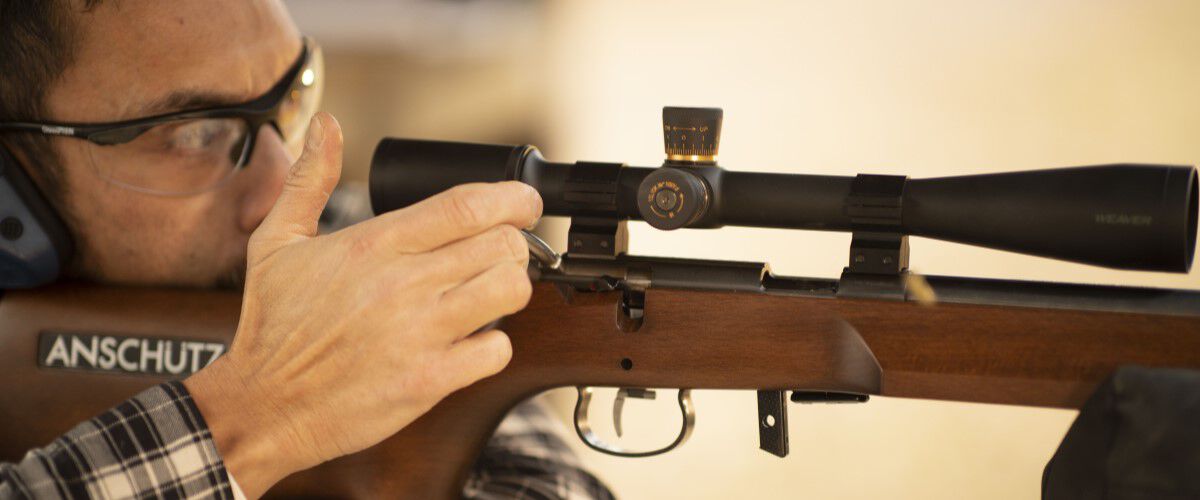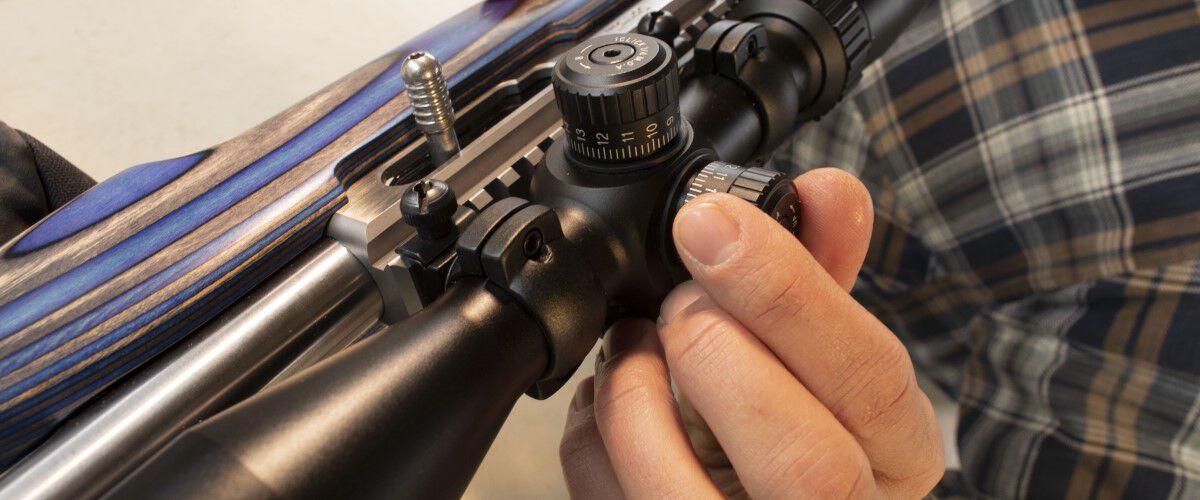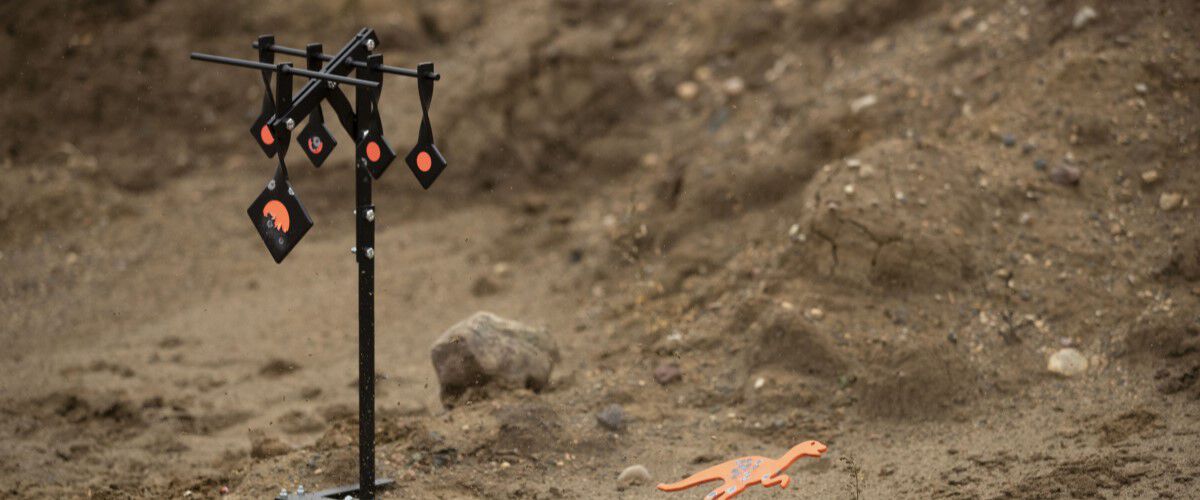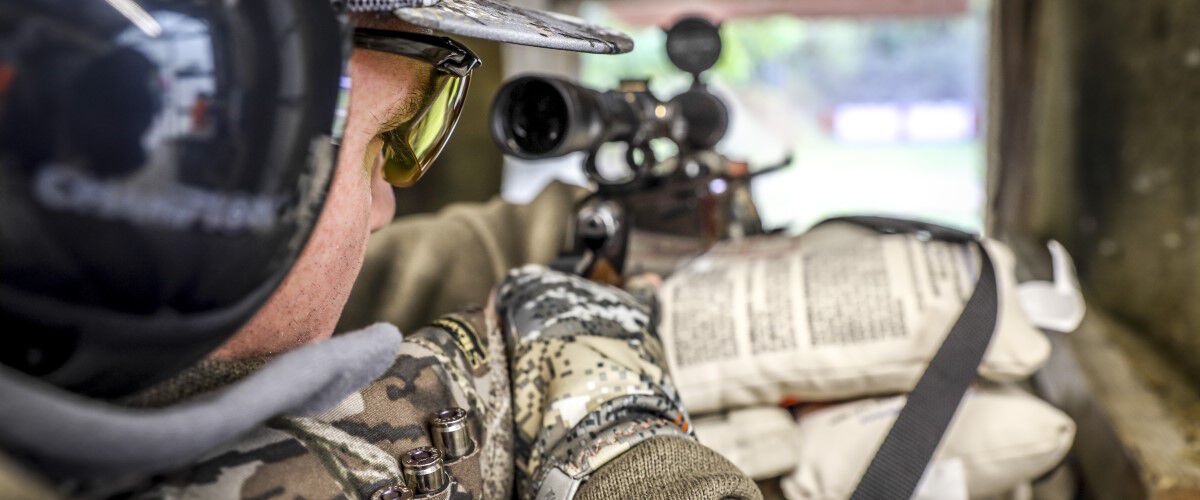Big Game Practice With Small Bore Rifles

You’ve planned the big game hunt of a lifetime. Whether it’s for Colorado elk or Alaska caribou, Yukon moose or New Mexico muleys, you’re in top physical shape and every item on your gear list has a check mark next to it. Still, the question remains: If you get your shot, your one opportunity, will you put that round where it needs to be? It’s a haunting question, but one you must take seriously. At the end of the day, your success hangs on your ability to make a lethal shot.
It goes without saying that practice with your big game rifle of choice is paramount to reaching that goal. You must become completely comfortable with the firearm and proficient at hitting your target across the full spectrum of distances you expect to shoot. But you’re missing out if that’s the only gun you shoot in the process. The rimfire rifle in the back corner of your gun safe can do more than just plink cans and snipe squirrels. Used right, it might do more to prepare you to punch your long-awaited big game tag than any other firearm.
Recoil
It’s common, especially for new shooters, to develop a flinch when firing hard-kicking centerfire big game cartridges. They start to put pressure on the trigger, anticipate the boom and then punch the trigger to complete the shot process. This results in poor accuracy. A flinch often causes the head to come up off the stock, which moves the barrel up or down. Nothing is more frustrating than burning through boxes of expensive ammo trying to end the day with a group you can be satisfied with.

But anyone who’s shot one knows a .22 rifle produces virtually zero felt recoil. This lets everyone—from the greenest beginners to most seasoned hunters—practice shooting fundamentals without the shoulder abuse. When there is no recoil, shooters learn to find the trigger, breathe and continue to squeeze until the shot breaks. They learn to stay down on the gun, reacquire the target and get ready for a follow-up shot.
The eye-to-scope-to-target alignment, proper trigger press, and similar skills and good habits built through long and frequent rimfire training sessions will transfer over when you pick up your centerfire rifle.
Variety
For most of us, shooting a centerfire rifle safely means using a formal public range. Not only does this hinder how often we can shoot, but it limits the shots to specific distances, angles and target types.
And though rimfire rounds still require adequate backstops and aren’t safe or legal for urban and suburban areas, they do make it more practical for shooters in rural settings or with access to private property to create a small backyard range. You can place a full array of targets including small steel plates, paper, self-healing target balls and even steel spinners at different angles and distances, and then shoot the course for hours.

An informal rimfire range also makes it easier to practice shooting off-hand, on shooting sticks, kneeling, prone off a backpack, and more. Get creative. Challenge yourself and have fun. The more you shoot your rimfire, the more you’ll see areas of your form that need polishing and the faster you’ll address them.
Cost
Another benefit, rimfire ammo is economical, especially compared to centerfire hunting rounds. A quality 22 LR round like those in CCI Clean-22 family can be purchased in tubs of 400 for less than $50. That’s a lot of shooting. Plus, these rounds are specially engineered to reduce copper and lead fouling in the barrel to ensure more shooting and less cleaning.
The lower the expense, the more rounds you can send downrange. And the more you shoot, the more proficient you will become.
The Real Thing
Obviously, rimfire work is not a replacement for the real thing. Once a week, grab your big-game rifle and head to the range. Go with a purpose. Don’t go just to send 20 rounds downrange and call it a day. Perfect practice makes perfect. Focus on the fundamentals you’ve developed with your 22 LR. You’ll be surprised how quickly you’ll start punching super-tight groups on downrange paper.

Develop a routine and stick with it. Routines develop muscle memory and build confidence, and confidence is what you’ll need to make your big game hunt a success.